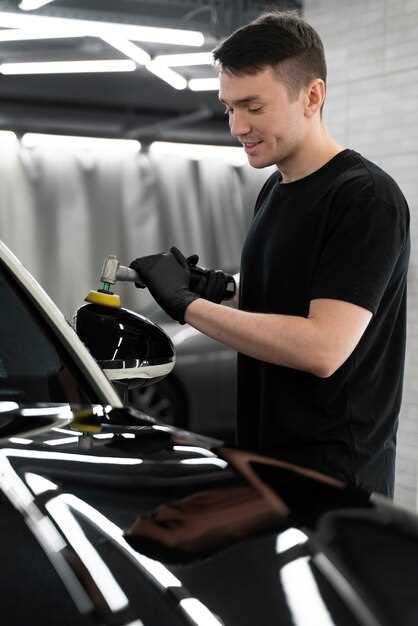
Engine bay detailing is an essential aspect of automotive care that many enthusiasts overlook. A clean engine compartment not only enhances the overall appearance of your vehicle but also contributes to its longevity and performance. By investing time and effort into detailing your engine bay, you can achieve a showroom-quality finish that reflects your passion for your car.
A well-maintained engine bay showcases the intricate components of your vehicle, revealing the care and attention you give to your entire automobile. This meticulous process involves thorough cleaning, degreasing, and polishing, ensuring that every component is pristine and free from dirt and grime. Proper detailing can also help you identify potential issues before they become significant problems, making it a wise practice for any car owner.
In this article, we will explore the steps necessary to achieve a stunning engine bay detail, emphasizing the tools and techniques required to bring out the best in this often-neglected area of your vehicle. From the right cleaning products to effective methods for protecting and enhancing the finish, you will gain the knowledge needed to make your engine bay shine like never before. Join us as we delve into the world of engine bay detailing and unlock the secrets to a flawless finish.
Preparing Your Engine Bay for Cleaning: Tools and Techniques
Before beginning the cleaning process for your engine bay, proper preparation is crucial to ensure an effective and safe detailing experience. Start by gathering essential tools that will aid in the task. Commonly used tools include a soft-bristle brush, microfiber towels, a pressure washer or garden hose, and plastic or vinyl-safe cleaning products. It is also advisable to have a detailing brush for hard-to-reach areas.
Next, it is vital to disconnect the battery to prevent any electrical shorts during the cleaning process. Remove the negative terminal first, followed by the positive terminal, and ensure that they are kept separate. This precaution helps to avoid any accidental sparks while working around sensitive components.
Before applying any cleaners, cover sensitive parts such as the air intake, electrical connections, and exposed wiring with plastic bags or plastic wrap. This protects these components from moisture and cleaning agents that could damage them. Use painter’s tape to secure the covers and ensure a tight seal.
Once preparations are complete, ensure the engine bay is cool. Cleaning a warm engine can lead to rapid evaporation of cleaning solutions, making them less effective. If necessary, allow some time for the engine to cool down after use.
Having water nearby is also essential, as rinsing off the cleaning products is crucial. If using a pressure washer, maintain a safe distance to avoid damaging any sensitive components. Use a gentle mist or spray rather than a powerful stream to minimize risk. Always test any cleaning product on a small area first to ensure compatibility with the surfaces in the engine bay.
By following these steps, you can adequately prepare your engine bay for cleaning, setting the stage for a detailed and showroom-quality finish. Proper tools and techniques will not only enhance the cleaning process but also protect your vehicle’s vital systems during the detailing process.
Step-by-Step Cleaning Process: Achieving a Flawless Appearance

Cleaning the engine bay is essential for achieving a showroom-quality finish. Follow these meticulously detailed steps to ensure your engine compartment looks pristine.
1. Gather Your Supplies: Before starting, collect all necessary materials. You will need degreasers, brushes, microfiber cloths, a pressure washer or hose, plastic bags, protective gloves, and a vacuum cleaner with various attachments.
2. Prepare the Area: Ensure you are working in a shady area to prevent cleaning products from drying too quickly. Begin by disconnecting the battery to avoid any electrical issues. Cover sensitive components such as the air intake and electrical connectors with plastic bags to prevent water damage.
3. Remove Loose Dirt: Use a vacuum cleaner to eliminate any loose debris and dirt from the engine bay. Focus on crevices and under components to prepare the surface for deeper cleaning.
4. Apply Degreaser: Generously spray a degreaser on all surfaces, avoiding sensitive electrical areas. Let the degreaser sit for a few minutes to break down the grease and grime.
5. Scrub the Engine Bay: With a soft-bristled brush or detailing brush, gently scrub all surfaces. Pay close attention to flat areas, crevices, and components that tend to accumulate oil and dirt. Use various brush sizes for effectiveness.
6. Rinse Thoroughly: Using a pressure washer or garden hose, rinse the engine bay, starting from the top and working your way down. Ensure all degreaser is completely washed away. Be cautious around electrical components and avoid high-pressure settings.
7. Dry the Area: After rinsing, use a microfiber cloth to blot and dry the engine bay. Carefully remove the plastic bags from the electrical components and ensure everything is dry to prevent corrosion.
8. Apply Protectant: Once the engine bay is dry, apply a vinyl or rubber protectant to hoses and plastic components. This step enhances the appearance and offers protection against UV rays and dirt over time.
9. Final Inspection: Inspect the engine bay for any missed spots and touch up as needed. Ensure that all components are reconnected properly, and the battery is reconnected as well.
10. Regular Maintenance: To maintain that flawless appearance, establish a routine cleaning schedule to prevent accumulation of dirt and grime in the engine bay. Regular maintenance will make each cleaning session easier and more effective.
Protecting Your Engine Bay: Best Practices for Longevity

Maintaining the engine bay is essential for preserving the overall performance and aesthetics of your vehicle. Implementing proper protection measures can significantly enhance the longevity of various components under the hood. Here are some best practices to ensure your engine bay remains in excellent condition.
Regular Cleaning: Schedule regular cleanings to remove dirt, grease, and debris. Use a gentle degreaser and soft brushes to ensure you don’t damage sensitive components. A clean engine bay not only looks better but also allows for easier inspections and repairs.
Use Engine Bay Covers: Consider investing in engine bay covers or insulation materials that protect against dust, moisture, and heat. These covers can prevent contaminants from accumulating and minimize the risk of corrosion.
Sealants and Coatings: Applying high-quality sealants or ceramic coatings can provide added protection to surfaces. These products shield against chemicals, heat, and water, creating a barrier that helps maintain a clean and protected environment for your engine.
Inspect for Leaks: Regularly check for fluid leaks from hoses, gaskets, and seals. Addressing these issues promptly can prevent damage to engine components and avoid costly repairs resulting from corrosion or build-up.
Avoid Water Accumulation: Water can cause significant damage, especially if it seeps into electrical components. Ensure there are proper drainage pathways in your engine bay and consider using fenders or splash guards to direct water away.
Limit Chemical Exposure: Be cautious about exposing your engine bay to harsh chemicals, as they can degrade plastic and rubber parts. Use automotive-specific cleaning products that are safe for sensitive components.
Routine Inspections: Perform regular inspections of belts, cables, and hoses. Look for signs of wear and tear, as early detection allows for timely replacements, ensuring parts function efficiently and withstand the test of time.
By implementing these best practices, you can effectively protect your engine bay, ensuring it remains in pristine condition for years to come. Prioritizing maintenance not only enhances your vehicle’s performance but also preserves its value and curb appeal.

